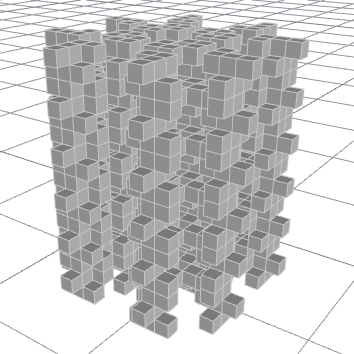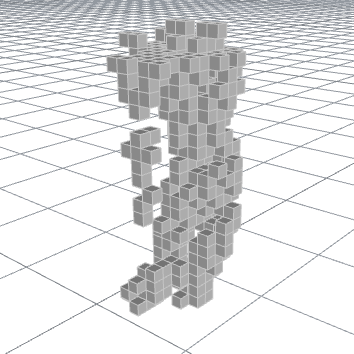Cellular Automata¶
A cellular automaton is a discrete model of computation consisting of a regular grid of cells, each of which can be in one of a finite number of states. Rules can be applied to every cell in the grid to determine how the grid updates over time. Generally, rules don’t change and aren’t random.

“Gosper’s glider gun”, an infinite loop in Conway’s Game of Life. By Lucas Vieira - Own work, CC BY-SA 3.0, https://commons.wikimedia.org/w/index.php?curid=101736¶

“Gosper’s glider gun”, an infinite loop in Conway’s Game of Life. By Lucas Vieira - Own work, CC BY-SA 3.0, https://commons.wikimedia.org/w/index.php?curid=101736¶
Stacking Conway’s Game of Life¶
One of the most common examples of cellular automata is Conway’s Game of Life, where grid cells are either “dead” or “alive”, and the grid updates according to the following rules each iteration:
Living cells with two or three living neighbors remain alive, all other living cells die.
Dead cells with exactly three living neighbors become alive, all other dead cells remain dead.
The “neighborhood” of a cell (i.e. the set of cells that are considered neighbors of any given cell) can be whatever you want, but in the Game of Life, the neighborhood of a cell is the 4 cells up, down, left, and right, and the 4 diagonally connected cells. This is called the Moore neighborhood and is not the only possible option.
The Game of Life is played on an infinite or toroidal (boundary-wrapping) grid, where you can choose any initial state. The game plays itself, updating the grid indefinitely for you to see what your initial state gives rise to.
On it’s own, the Game of Life doesn’t create any sort of designs, as it’s emphasis is more on showing an animation of sorts. That being said, it’s possible to convert these “animations” into a 3D volume by stacking each iteration on top of its predecessor, creating a 3D voxel grid.

“Pulsar”, an oscillator of period 3.¶

“Pulsar”, an oscillator of period 3.¶

A 3D-stacked pulsar.¶
Oscillators create stacks that could extend upwards infinitely with a repeating pattern, but many initial configurations lead to a finite number of steps before a steady state is reached, such as with two gliders on a toroidal surface that crash into each other.
Two gliders on a toroidal grid.¶
Two gliders on a toroidal grid.¶

The stack created by the two gliders crashing.¶
RLE code for crashing gliders
You can paste the following RLE code into https://conwaylife.com/ to see the evolution of the initial state.
x = 6, y = 6, rule = B3/S23:T9,9
3b3o$5bo$4bo$b2o$obo$2bo!
Conway’s Game of Life is just one example of cellular automata. Choosing different types of rules, boundary conditions, and grid types will allow us to create wildly different results. You’ll be implementing a simpler version of cellular automata for Assignment 4: Elementary Cellular Automaton. Updating rules partway through the iterations or randomly selecting which rule to apply for each case can also create interesting affects.
Using the Grasshopper Script
You can download the Grasshopper script used to create the images shown above here:
life-stack.gh. To use it,
go to a “Life Viewer” website, including https://conwaylife.com/ or https://lazyslug.com/lifeviewer/.
Once there, make sure you update the rule used in the website to include a toroidal
grid. To do this, select the settings icon at the bottom right, click “Pattern”,
then “Change Rule”. This should display a popup that has a text entry box. Inside the
box, put in Life:T10,10. This will update the rule to the Game of Life rule with
a toroidal 10x10 grid. If you’d like to use a differently sized grid, set the rule
to Life:Tx,y, where x is the horizontal width and y is the vertical height
of the grid. The Python 3 component in the Grasshopper file won’t work without the
toroidal grid defined.
From here, draw whatever you want in the grey box (you’ll need to select the pencil tool instead of the pan tool in the top left). When you’ve gotten something you like, select everything (CTRL+A), then copy (CTRL+C). Paste it into the Panel component in the Grasshopper script, and it should work. You can also adjust the number of generations to display. If, at any point, a generation is computed with all cells set to dead, the script terminates early.
One thing to note: these life viewer websites don’t encode information about where the pattern is placed inside the toroidal grid. The websites default to centering the pattern within the grid, even if the pattern you drew wasn’t centered. The Grasshopper script does the same, but you can specify X and Y offsets, if you’d like.